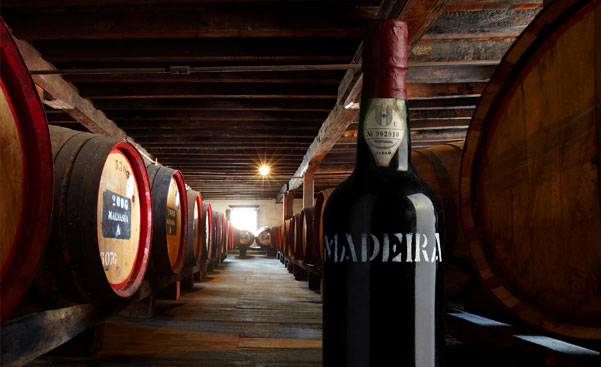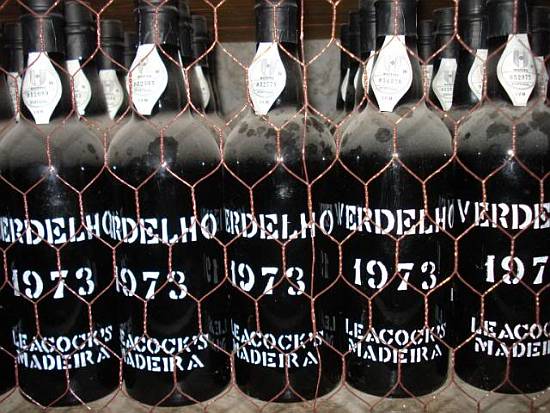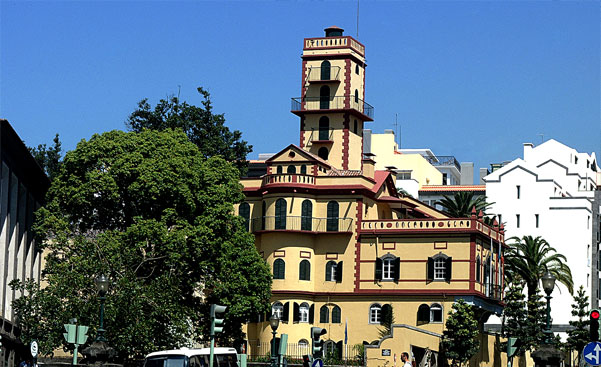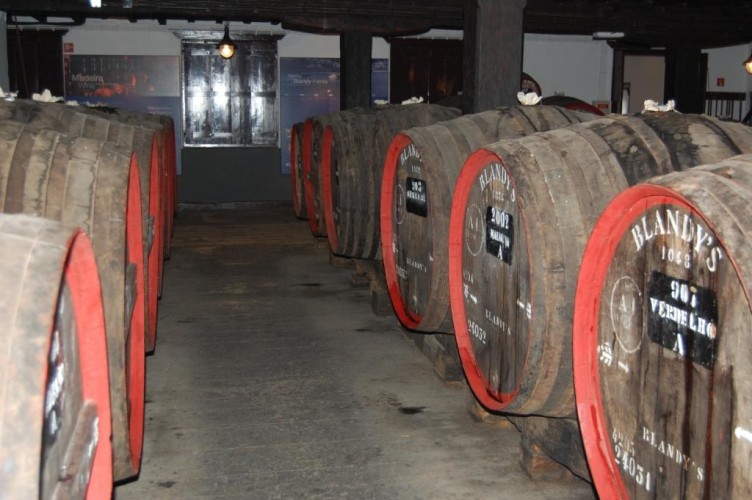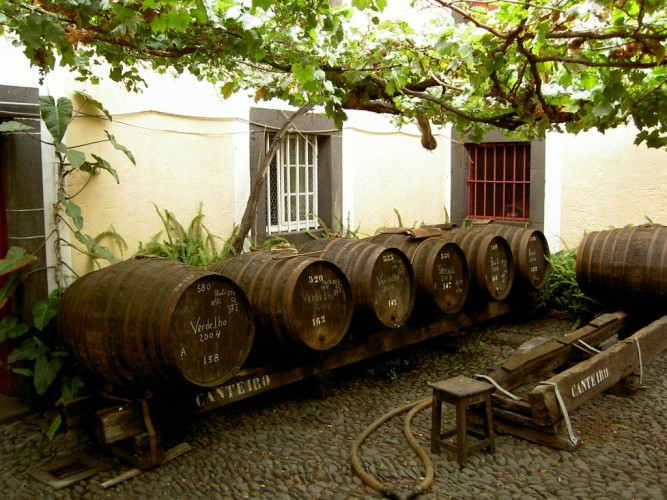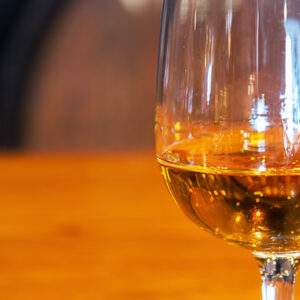Madeira: An interview with Clemens Summerer
Reinhard Pohorec•Factotum Fortified
Madeira is a beautiful mystery, somewhere in the Atlantic Ocean. Island of Flowers, part of Portugal and the European Union, historical archipelago, roughly 950 km southwest of Lisbon and 737 km west off the Moroccan coastline. Well, and there’s also the wine obviously. Like other fortified wines “Madeira” is a lost treasure, most people might know that “it kind of exists” but for 99,9% of guests and consumers that’s where it ends.
To give you a hands on entrance into the world of “the other Portuguese fortified” I sat down for a chat with my good friend, fellow WSET Diploma student and wine enthusiast Clemens Summerer, who (not so) incidentally just came back from a trip to Madeira. If you’re really into your geeky theoretical stuff, beware, there’s more to come. But let’s have an easy access look at the little island and its treasures.
Clemens, thank you so much for your time and willingness to share some thoughts about fortified wines and Madeira in particular. What do “fortifieds” mean to you, where do you see their significance?
For me fortified wine has the same importance as still or sparkling wine -like the yeast and second fermentation give sparkling wine an additional character, fortification and ageing (in an oxidative or non oxidative way) contribute to the characteristics of wine as well. Fortified wine lost reputation in the last decades, which can also be traced back to the rise of still and sparkling wine. But thanks to Port wine, its vintage and Ruby type, slightly closing the gap between oxidized wines and still red wine, the fortified vinos started a bit of a renaissance. I personally prefer traditionally produced (oxidative) wines like Madeira, which from my perspective are more accostable for consumers than certain Sherries, for instance.
What is the quintessence of Madeira, as an island and as a wine region?
Madeira (732 km²) and its inhabited “neighbor” Porto Santo (42 km²) are small islands of volcanic origin with the highest altitude at 1.861 m above sea-level.
Due to the diversified and constantly changing landscape of valleys, coasts and mountains, the agricultural area is characterized by very sharp slopes with tiny terraces or bays, only accessible via boat or teleferic. Therefore the vineyards cover just over 470 hectares (0.6% of the surface) owned by more than 2.000 grape producers, averaging bit more than 0.2 hectares per producer. Henriques & Henriques owns the biggest vineyeard with 10 hectares and the Madeira Wine Company (MWC), who is the second biggest producer of foritfied Madeira, owns only three vineyards with a total of eight hectares.
Vineyards can be found within all geographic directions of the island and are mainly along the coast line. What’s fascinating about Madeira is that the weather can change within a few kilometers and turn from sunny and windy, to rainy and foggy within minutes.
What does the organization of business/operation look like?
In contrast to the big number of grape growers there are only eight producers of the fortified DOP Madeira, counting for 96% of the wine production in Madeira -the other four percent are about 1.300 hecto litres of dry wine (DOP Madeirense and IGP Terras Madeirenses).
These eight producers are situated in Funchal and its surroundings, only one of them is still completely family owned (D’Oliveiras). Most of the grapes they use are bought in additionally, as the efforts and costs to control, maintain and work the vineyards all over the island would simply be too high.
So we mentioned in the beginning that more than 2.000 growers deliver their grapes to only eight producers. In contrast to the diversified landscape this indicates that one Madeira wine might not be all too different from another. This of course is a misconception as the reputation of a simple sweet wine.
So Madeira really doesn’t always taste the same?
Not at all. Why? Madeira can be made from six different grapes (Tinta Negra, Sercial, Verdelho, Bual, Malmsey, as well as Terrantez and Bastardo) with different levels of sweetness and age categories. This allows the producers to generate various styles and types of Madeira wine. And looking at the high class products, they demonstrate their ability to do just that –even if the wine is made from Tinta Negra, which can be found in 80% of the vineyards and has a smack of non-noble variety.
A few more numbers?
In 2014 about 3.9 million liters of fortified Madeira wine were produced with 3,4 million liters sold at an average price of roughly €5 per liter. The main markets are France, UK, USA and Japan.
Only 10% bare an age statement of 5 Years old Madeira, this market share is dominated by the MWC, also accounting in large part for Madeira of “10 years”, “15 Years”, “20 Years”, “30 Years”, “+40 years”, Colheita and Frasqueira (Vintages).
But there are competitors like Barbeitos, Henriques & Henriques and the already mentioned D’Oliveiras having a big focus on these age levels.
Is there a chance for a Madeira renaissance?
The age focus and premium quality is crucial to get more attention by wine-enthusiasts, wine geeks, sommeliers, chefs and consumers. When I visited Madeira I had the chance to sample from one to three year old Madeira, five year old Madeira till vintages (frasqueiras) back to 1900 and was really impressed by the diversity and high quality of wines and wineries.
Yes, there is a chance for renaissance, top restaurants are increasingly requesting “frasqueiras”. However it would be important to put more effort and marketing (e.g. by the Institute of Madeira Wine) into an ever increasing reputation and communication of the product.
How would you “relish” your glass of Madeira?
The most important thing for me is simply to enjoy wine -no matter if it is Madeira, fortified, sparkling or still wine. Enjoyment does not need an occasion. So you can have Madeira on its own, as an aperitif, paired with food or a cigar, even mixed into cocktails, a lot of which can be seen with Sherry at the moment.
One of the biggest advantages is that if you open a bottle of good Madeira wine (and I am talking about Madeira wine that is older than ten years) you do not need to drink it the very same day, within a week, months or even a year. It’s so stable, you won’t harm these beauties. Simply enjoy it!
How about food matching, you’ve mentioned that before?
Absolutely! In the UK for example, aged Madeira can be found more often now, as the pairing possibilities are huge. Again, diversity is what this is all about: dry to sweet, always maintaining freshness, from herbal notes to dark fruits, it’s all there.
You can try a classic Malmsey and Bual with dark chocolate, figs or a Habano, as well as Sercial as an appetizer with salty fish.
Clemens, thank you so much for.



